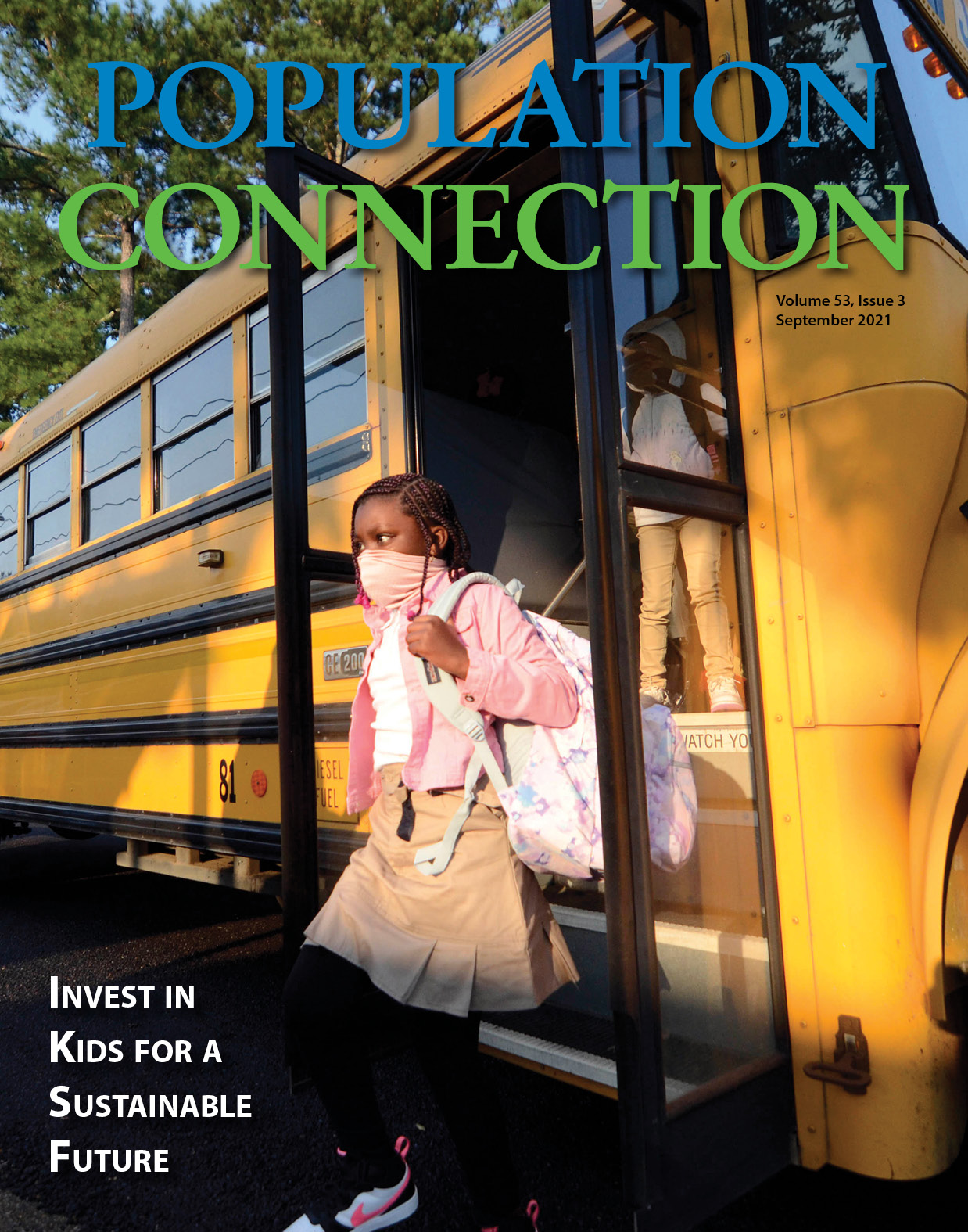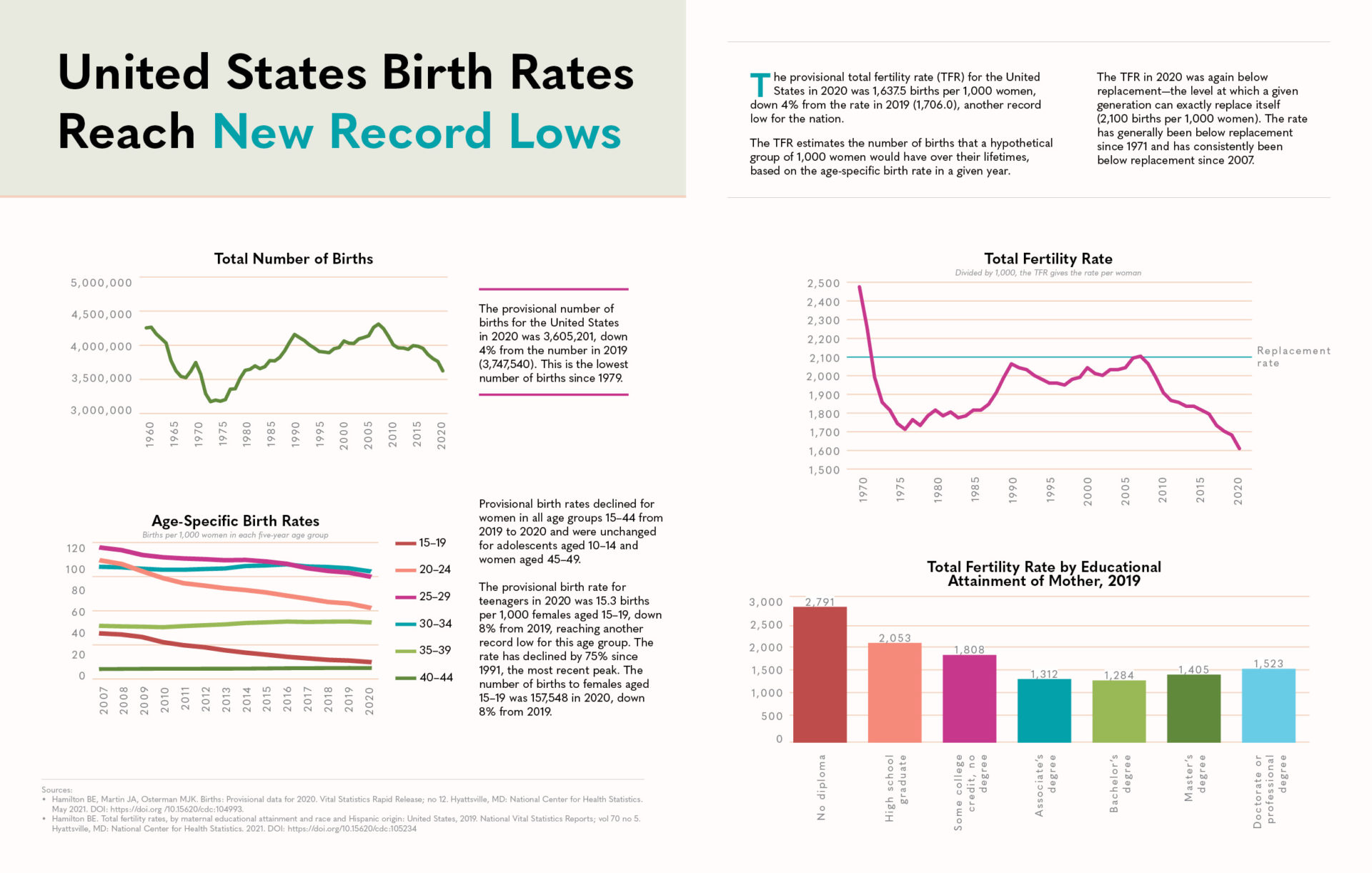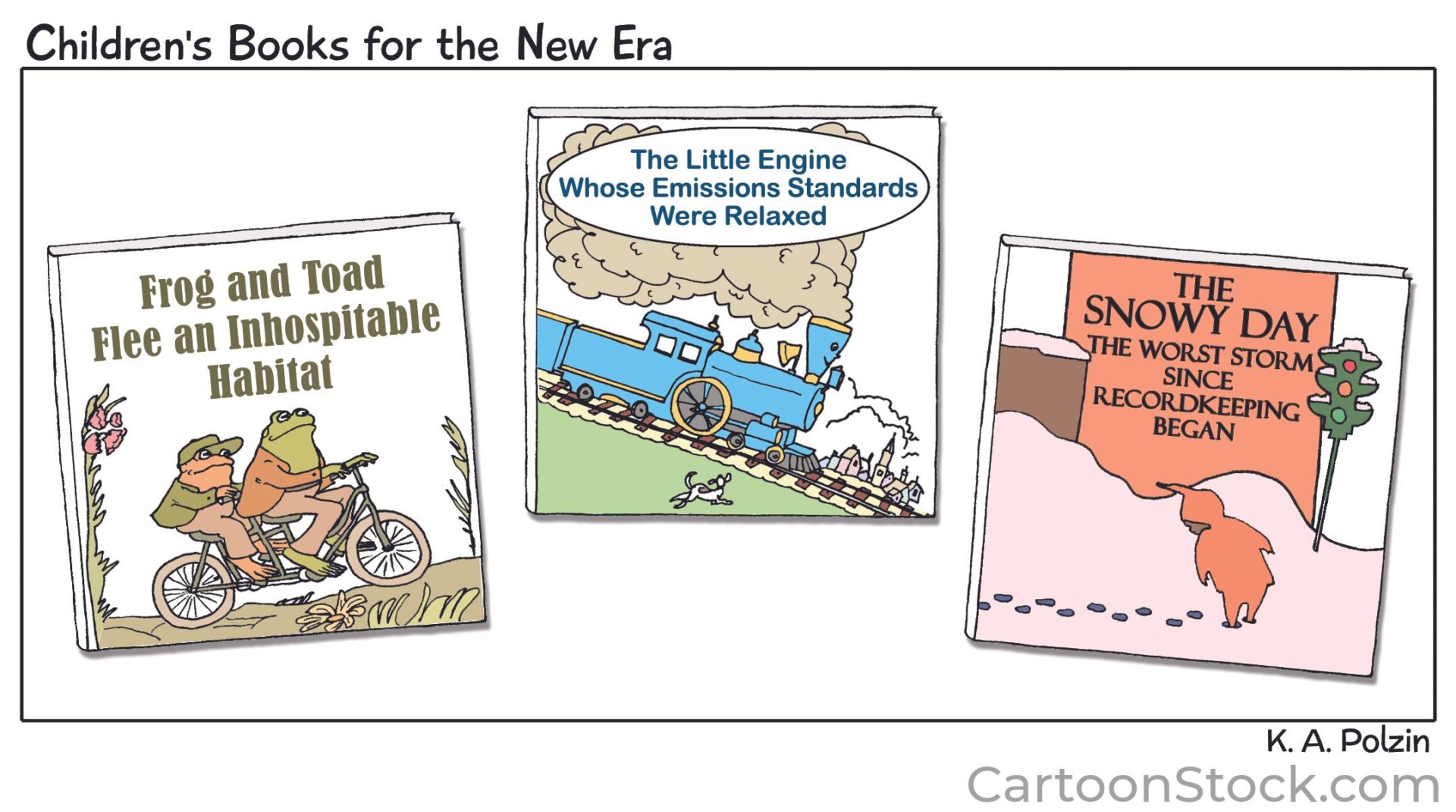
September 2021
Population stabilization—which is nowhere near happening at the U.S. or global level—would be a boon to everyone’s quality of life, to say nothing of the benefits to the natural world. Yes, there would be challenges to how economies are structured. But those challenges would be far easier to address than the permanent environmental tipping points that humanity is already beginning to breach and that we’ll only exceed more frequently as world population continues to grow.
Cover image: Marissa James gets off the bus at Summit Elementary School in Summit, Mississippi, on August 5, the first day of the 2021-2022 school year for students in the McComb School District. (Matt Williamson, The Enterprise-Journal, via AP Images)
Concerns about the economic impacts of lower birth rates are valid, but also shortsighted—especially given that an ever-expanding global population of wealthier people living longer is simply unsustainable. One short-term solution to an aging population is immigration. Longer-term answers come down to finding more creative ways to fund social welfare programs than dependence on unlimited population growth and placing the burden on women to create a generation of workers. Jill Filipovic
Brianne Walker plays with her three-year-old daughter, Jeannette, at A Place To Grow daycare in Brentwood, New Hampshire, on July 26, 2021. Walker and her family have qualified for the expanded child tax credit, part of President Biden’s $1.9 trillion coronavirus relief package. “The additional money does help alleviate the pressure,” said Walker, 29, who took custody of her two siblings last year after her mother overdosed. The $800 credit will help make up for losses she incurred after quitting a kitchen design job to care for her three children, as well as her two younger brothers. (Elise Amendola, AP Images)



Regular Columns
